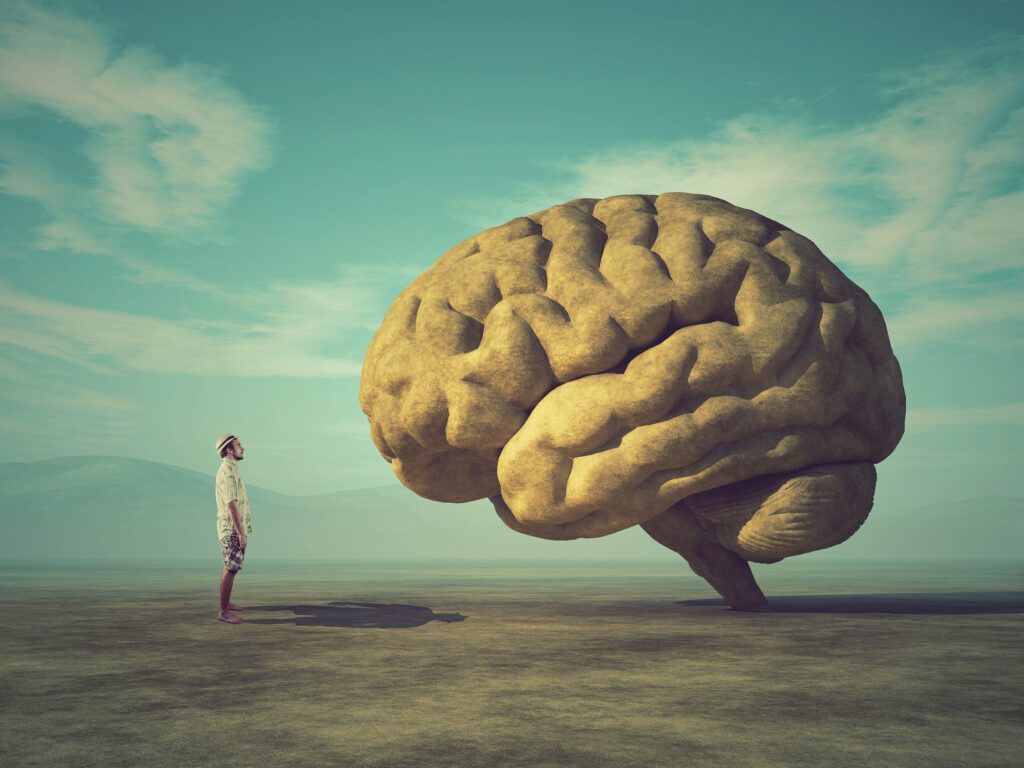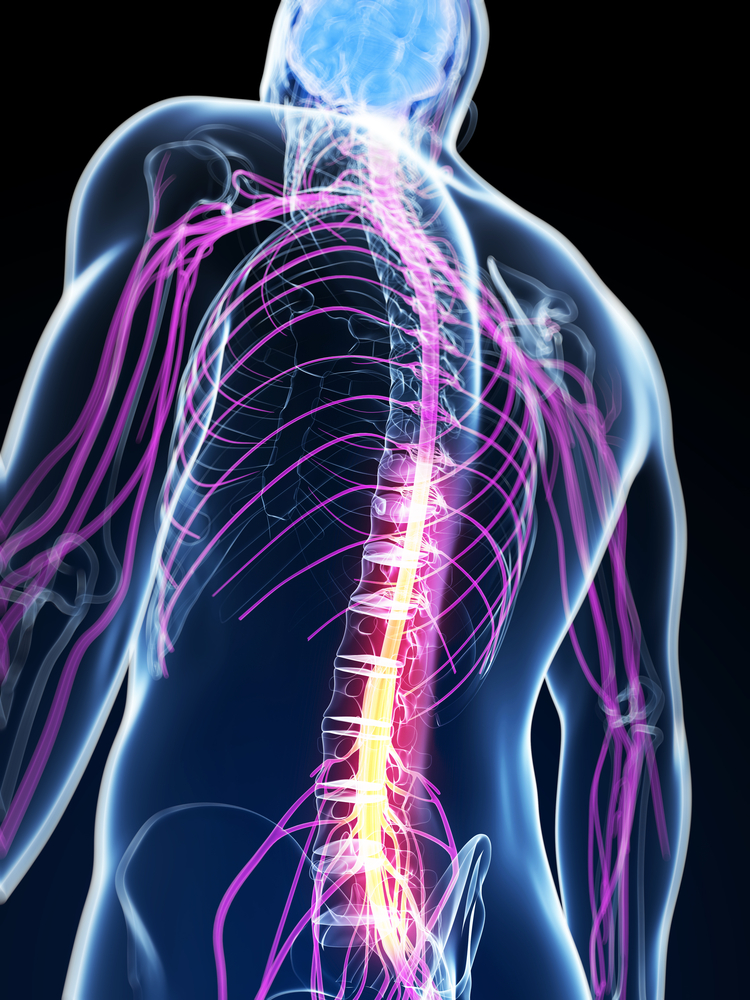In recent years, science has greatly advanced our understanding of how the spine and brain are interconnected. The 2016 Neural Plasticity study “Manipulation of dysfunctional spinal joints affects sensorimotor integration in the prefrontal cortex: a brain source localization study” provides compelling evidence that targeted spinal manipulation reshapes the brain’s sensory-motor pathways, especially in the prefrontal cortex (PMC). This finding strengthens the theory that chiropractic care—far beyond serving as a pain reliever—can influence central nervous system function via neuroplastic mechanisms.
This article explores that landmark study, connects it to broader chiropractic neuroplastic research, and aligns those scientific insights with the hands-on, structural-functional work performed by Chiropractic Biophysics (CBP) practitioners—including the unique offerings at your Western Canadian practice, one of only two Advanced-Certified CBP offices in the region.
Why the 2016 Neural Plasticity Study Matters
Study Design at a Glance
- Participants: 19 subclinical pain individuals (i.e., those with spinal dysfunction but minimal to no symptoms).
- Protocol: Each participant received both a genuine spinal manipulation session and a sham-control intervention in a crossover format.
- Measurements: Somatosensory evoked potentials (SEPs) from the median nerve were recorded using 62-channel EEG both before and after each intervention.
- Data Analysis: Dipole source localization identified brain regions generating the SEP “N30” component, noted to reflect early sensorimotor integration—particularly involving the prefrontal cortex (MDPI, ResearchGate, Aalborg Universitets forskningsportal).
Key Findings
- After real spinal manipulation, the N30 amplitude dropped by 16.9% (p = 0.02), while the control group showed no significant change (p = 0.4).
- Source analysis pinpointed the prefrontal cortex as the primary locus of reduced activity—decreasing by 20.2% (p = 0.03) after manipulation, but unchanged after the sham procedure (PMC).
Interpretation of Results
By dampening activity in the prefrontal cortex, spinal manipulation appears to recalibrate maladaptive sensorimotor processing, restoring more efficient neural function. Since the prefrontal cortex orchestrates executive functions such as attention, task-switching, motor planning, and inhibition control, these findings suggest that structural spinal care can deliver deep-seated central nervous system benefits—not just symptomatic relief (Aalborg Universitets forskningsportal).
Broader Evidence: Chiropractic’s Impact on Brain Function
While the Neural Plasticity study offers precise brain-source insights, a growing body of research shows chiropractic care drives systemic neurological changes.
Sensorimotor Integration and Motor Control
A 2022 review in Brain (MDPI) highlights that spinal adjustments can:
- Influence somatosensory processing and sensorimotor integration
- Enhance motor control, reflex excitability, and muscle strength
- Reverse maladaptive central neural plasticity over time (Chiropractic BioPhysics, MDPI, Aalborg Universitets forskningsportal)
Examples include documented gains in plantar-flexor strength among college athletes, stroke survivors, and elite performers—even after a single session of spinal adjustment (MDPI).
Cognitive and Executive Performance
Clinical observations have tied chiropractic adjustments to improvements in cognitive clarity and executive functioning:
- A 2016 clinical article reported increased prefrontal cortex activity following adjustments—positing improvements in mental focus and stress recovery (EverHealth Chiropractic).
- Studies using EEG measures have shown improved attention, memory retention, multi-tasking capabilities, and problem-solving speed post-adjustment (Chiropractic BioPhysics, MDPI).
Neuroplastic Remodeling and Rehabilitation
Neuroplasticity—the brain’s capacity to adapt through structural and functional changes—is widely accepted:
- The Neural Plasticity article demonstrates functional plasticity via changes in prefrontal SEP generators (Wikipedia, Aalborg Universitets forskningsportal).
- Changes in central sensory–motor integration, diminished cortical inhibition, and enhanced reflexes—all linked to chiropractic care—mirror processes in restorative neurology aimed at recovering function after neurological injury (MDPI).
Collectively, this evidence suggests chiropractic treatment—notably spinal manipulation—can help “rewire” maladaptive circuits and support cognitive-motor recovery.
Chiropractic Biophysics (CBP): A Structural & Functional Paradigm
What Sets CBP Apart
Chiropractic Biophysics is a highly specialized, research-backed chiropractic method blending anatomy, physiology, physics, and geometry to restore spinal alignment and posture (pchchiropractic.com). Founded in 1980 by Drs. Donald and Deanne Harrison, CBP employs 3D posture analysis, precise x‑rays, and mathematically tailored adjustments aimed at delivering lasting structural change—not just symptom relief.
CBP’s Neurophysiological Foundation
- CBP’s precise spinal corrections address dysfunctional segments—likely the same targets of the 2016 study—offering a plausible pathway for the observed prefrontal cortical changes.
- By structurally restoring spinal biomechanics, CBP may normalize sensory input patterns, enhancing sensorimotor integration and cognitive control.
- The CBP Non-Profit has invested heavily in biomechanics, posture modeling, and randomized clinical trials validating these outcomes (pchchiropractic.com, EverHealth Chiropractic, cbpnonprofit.com), embedding CBP firmly within an evidence-based, neuroplastic framework.
How CBP Non-Profit Research and Neural Plasticity Intersect
CBP Non-Profit’s robust research portfolio—covering spinal load modeling, alignment analysis, posture, x‑ray reliability, and randomized trials—sits at the intersection of structural correction and functional restoration (cbpnonprofit.com). These structural outcomes align neatly with the neurophysiological mechanisms observed in the Neural Plasticity study:
- Adjustments reduce dysfunctional sensory input
- This resonates with EEG-documented prefrontal activity reductions
- Brain recalibration occurs in executive regions, improving sensorimotor integration
- Clinically, this translates to improved muscle strength, reflexes, cognitive clarity, and motor control
CBP thus stands out as a holistic approach that integrates structural correction with evidence-based neurological rehabilitation.
Your Western Canadian CBP Practice: Unique, Science‑Driven Care
We are proud of the fact that we are one of only two advanced certified CBP offices in western Canada. We offer tailored, care plans that are based on evidence based protocols where we leave nothing to chance.
At 100+ Living Health Centers, each CBP care plan begins with 3D posture scans and x-rays to map precise spinal imbalances. These findings inform a customized protocol involving:
- Adjustments
- Mirror-image spinal traction
- Rehabilitation exercises
The goal: to rebuild proper spinal form, improving neurological input, sensorimotor integration, and executive brain function.
Our Unique 100+ Living Plan by following the 100+ Living Blueprint.
At the 100+Living Health Centre, our mission is to help people regain health and thrive according to the “100+ Living Plan.” By restoring spinal form and enhancing nervous system function, CBP empowers patients to live optimally well, longer.
Sandra’s experience. . . .
Let me introduce you to “Sandra,” a 42-year-old working mom of two who came to our clinic not because of acute pain, but because she was exhausted, foggy-headed, and constantly tense. She’d already seen multiple providers—her labs were normal, her diet was decent, and she exercised semi-regularly. But she told us, “I feel like I’m surviving, not living.”
During our assessment, we discovered a significant loss of cervical curve on her digital x-rays, forward head posture exceeding 45 mm, and compensatory shifts in her thoracic spine. Structurally, Sandra’s spine was out of balance—sending constant, distorted input to her brain, which we now know can overload key regions like the prefrontal cortex, based on the Neural Plasticity study.
We crafted a care plan using Chiropractic BioPhysics protocols: mirror-image adjustments, in-office 3D traction, and customized posture-corrective exercises. Within four weeks, Sandra reported sleeping more soundly. By week seven, she noticed something else: “I’m getting through work faster, and I actually feel like myself again.”
What she was experiencing wasn’t just less tension—it was improved sensory integration and better executive function. Her brain wasn’t being flooded with abnormal feedback from her dysfunctional spinal joints anymore. And that’s exactly what the research tells us: correct the dysfunction, and you reduce the overload on key brain regions like the prefrontal cortex.
By the end of her 12-week plan, Sandra wasn’t just out of pain—she was performing better at work, handling stress more calmly, and showing up more fully for her kids. As she put it, “I came here to fix my posture. What I got was my clarity back.”
Sandra’s story is not unusual. We see it every week: clients come in for structural support, and through that, their brain and body begin working with them instead of against them. That’s the power of precision-based chiropractic care—rooted in science, reinforced by outcomes, and reflected in lives changed for the better.
Why Structural Care Supports Brain Health
Sensory Input Matters
The 2016 study shows that adjusting spinal joints changes prefrontal electrical activity. This aligns with broader neuroscientific evidence that the brain continuously adapts based on the quality of peripheral input.
Executive Function Through Spinal Intervention
The prefrontal cortex’s role in top-down motor control implies that improving its efficiency—via balancing sensory inputs—can benefit everything from reflexes to movement coordination.
Long-Term Restoration
CBP offers a plan that’s not just symptomatic—it’s structural and foundational. Restored posture and spine alignment equal healthier neural signaling, better brain-body integration, resilience, and longevity.
Integration with CBP’s Vision of Health
Longevity by Design
As an advanced certified CBP practice we work to ensure spinal integrity isn’t lost to age or chronic stress. This safeguards continuous, high-quality sensory input—supporting sustained neural and cognitive health well into advanced age.
Moving Beyond Pain Relief
This evidence-based, structural approach empowers people to transcend symptom management. Instead, they cultivate an optimized balance between spine structure, nervous function, and life performance.
Conclusion
The 2016 Neural Plasticity study offers powerful neural evidence: a single spinal manipulation can recalibrate the prefrontal cortex and restore sensorimotor integration. When viewed alongside the broader chiropractic literature on neuroplasticity—and the biomechanics-driven work of CBP—a clear picture emerges:
- Structure matters: dysfunctional joints send faulty sensory signals to the brain.
- Adjustments can recalibrate; CBP capitalizes on this with precision care plans.
- Brain changes follow: neural efficiency improves, reflected in cognitive, motor, and quality-of-life gains.
Your CBP clinic in Western Canada—one of only two advanced‑certified in the region—is uniquely positioned to deliver this scientifically grounded model of care. At 100+ Living Health Centers, patients receive customized CBP services designed not just to feel better, but to live better—stronger, clearer, and longer.
Want to learn more?
- Curious to see how spinal alignment affects your brain? Book a CBP assessment today.
- Want to join others on their journey of enhanced function and longevity? Discover our 100+ Living Plan and how it integrates structural precision with neurological restoration.
References
- Lelic D, et al. Manipulation of dysfunctional spinal joints affects sensorimotor integration in the prefrontal cortex… Neural Plasticity, 2016; Article ID 3704964 (MDPI, Aalborg Universitets forskningsportal, ResearchGate)
- Haavik-Taylor & Murphy. Early EEG evidence on sensorimotor integration and spinal manipulation (ResearchGate)
- Brain (MDPI) review—chiropractic, central neural function, muscle strength
- IdealSpine article—EEG-based improvements in cognition post-adjustment
- Everhealthchiro article—2016 prefrontal activity increase, clearer focus
- CBP Non-Profit publication history
- CBP background—science-driven, geometry-based method








